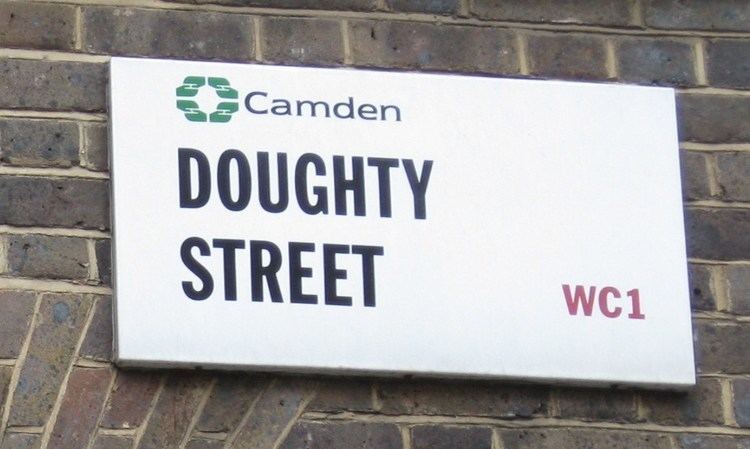Length 0.1 mi (0.2 km) south end Roger Street Construction started 1790 | Location Camden, London Major cities London | |
 | ||
Amal clooney arrives at doughty street chambers in london
Doughty Street is a broad tree lined street in the Holborn district of the London Borough of Camden. The southern part is a continuation of the short John Street, which comes off Theobald's Road. The northern part crosses Guilford Street and ends at Mecklenburgh Square. The street is named after a landlord of the area at the time it was built, Henry Doughty.
Contents
- Amal clooney arrives at doughty street chambers in london
- Map of Doughty St London WC1N 2AA UK
- Dickens doughty street home
- History
- Notable occupants
- References
Map of Doughty St, London WC1N 2AA, UK
Dickens doughty street home
History
The street contains mainly grade II listed Georgian houses built between 1790 and the 1840s. Many of the houses have been converted into offices and are popular with companies in the legal profession and the media. In the last few years, many of these have been converted back to family homes.
In the nineteenth century, it was an exclusive residential street and had gates at either end to restrict entry and these were manned by porters.
"It was a broad, airy, wholesome street - none of your common thoroughfares, to be rattled through by vulgar cabs and earth-shaking Pickford's vans; but a self-included property, with a gate at each end, and a lodge with a porter in a gold-laced hat and the Doughty arms on the buttons of his mulberry coat, to prevent any one, except with a mission to one of the houses, from, intruding on the exclusive territory."
The London Post Office Railway passes underneath the street, but is now disused.
